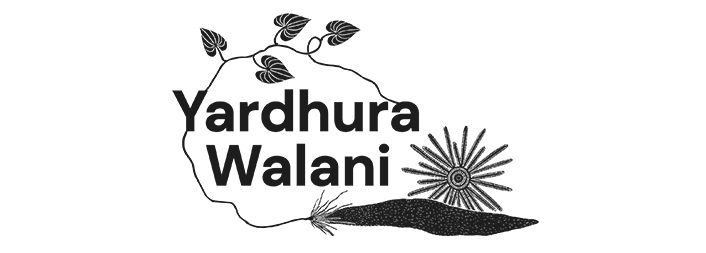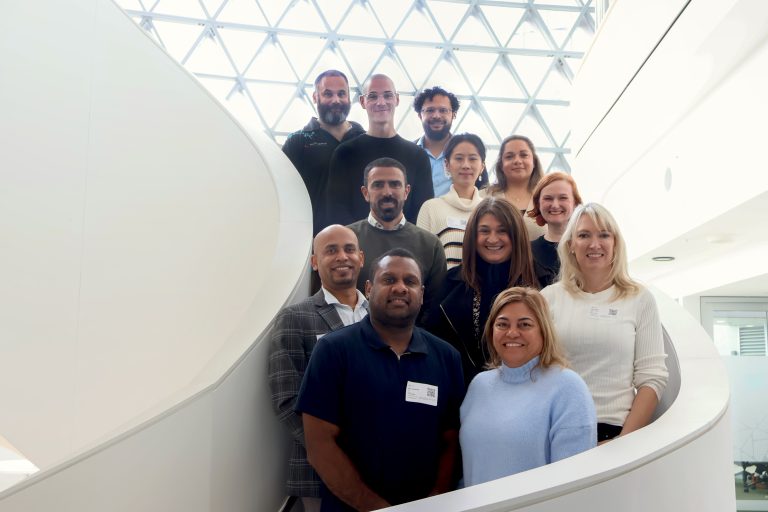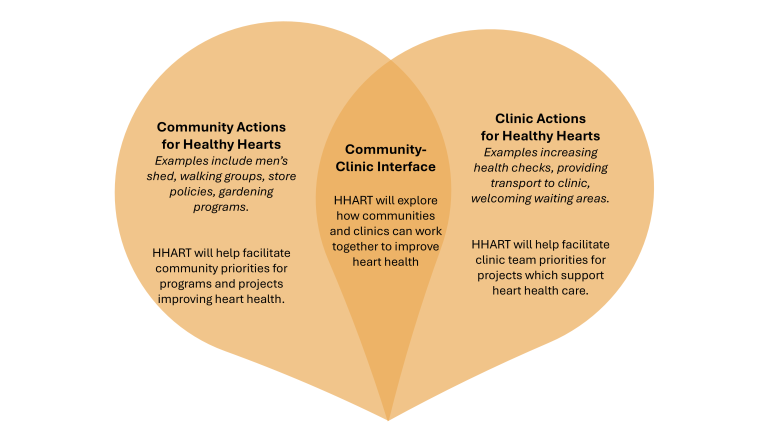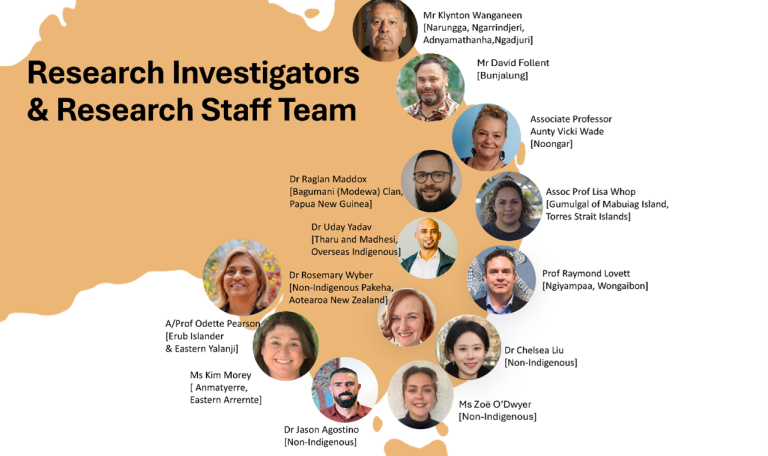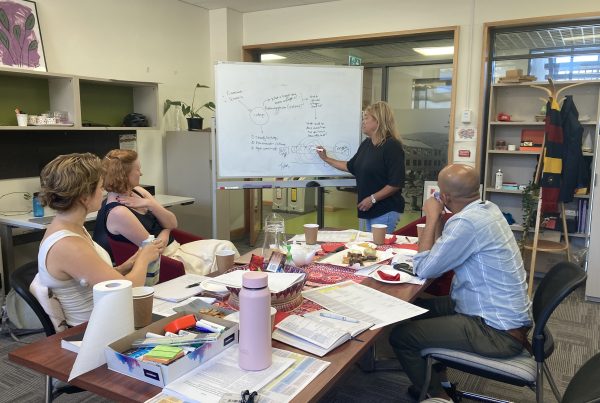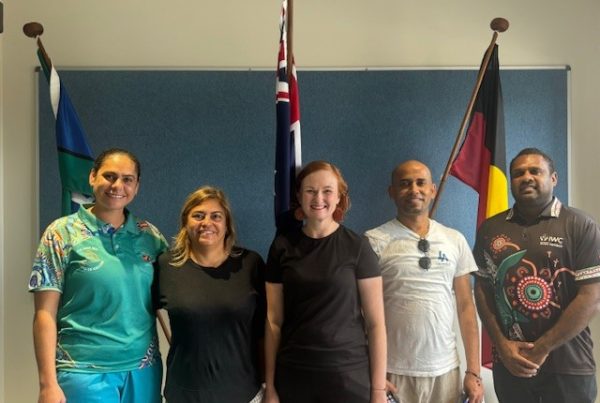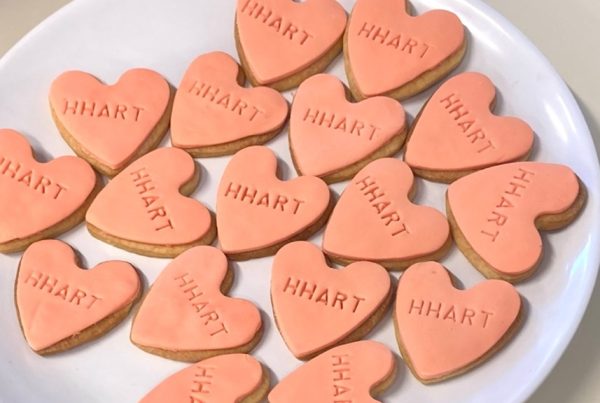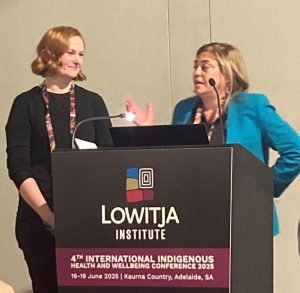Brainstorming & Blue Sky Thinking: Where HHART Was Born
In alignment with the MRFF Cardiovascular Disease (CVD) Mission – Stream 3, the Wardliparingga Aboriginal Health Equity Theme of the South Australian Health & Medical Research Institute (SAHMRI) and the Enhancing Chronic Disease Care Team at the Australian National University (ANU) came together with a shared passion: to explore how Aboriginal and Torres Strait Islander people can live free from heart disease and stroke for as long as possible—through culturally secure, best-practice prevention delivered by community and primary health care services.
In July 2023 the ANU team hosted an in-person workshop with nine participants, bringing together SAHMRI to map out the critical components of a new grant application. It was during this creative and collaborative session that the idea for Healthy Heart Actions Right Time (HHART) was born! (see figure below)
HHART is an Indigenous-led research initiative dedicated to bringing together Aboriginal and/or Torres Strait Islander community groups and individuals, community controlled primary health care providers, and key stakeholders, to co-design, implement and evaluate evidence-informed models of holistic heart disease prevention incorporating local community and clinical responses to heart health, using culturally secure approaches.
